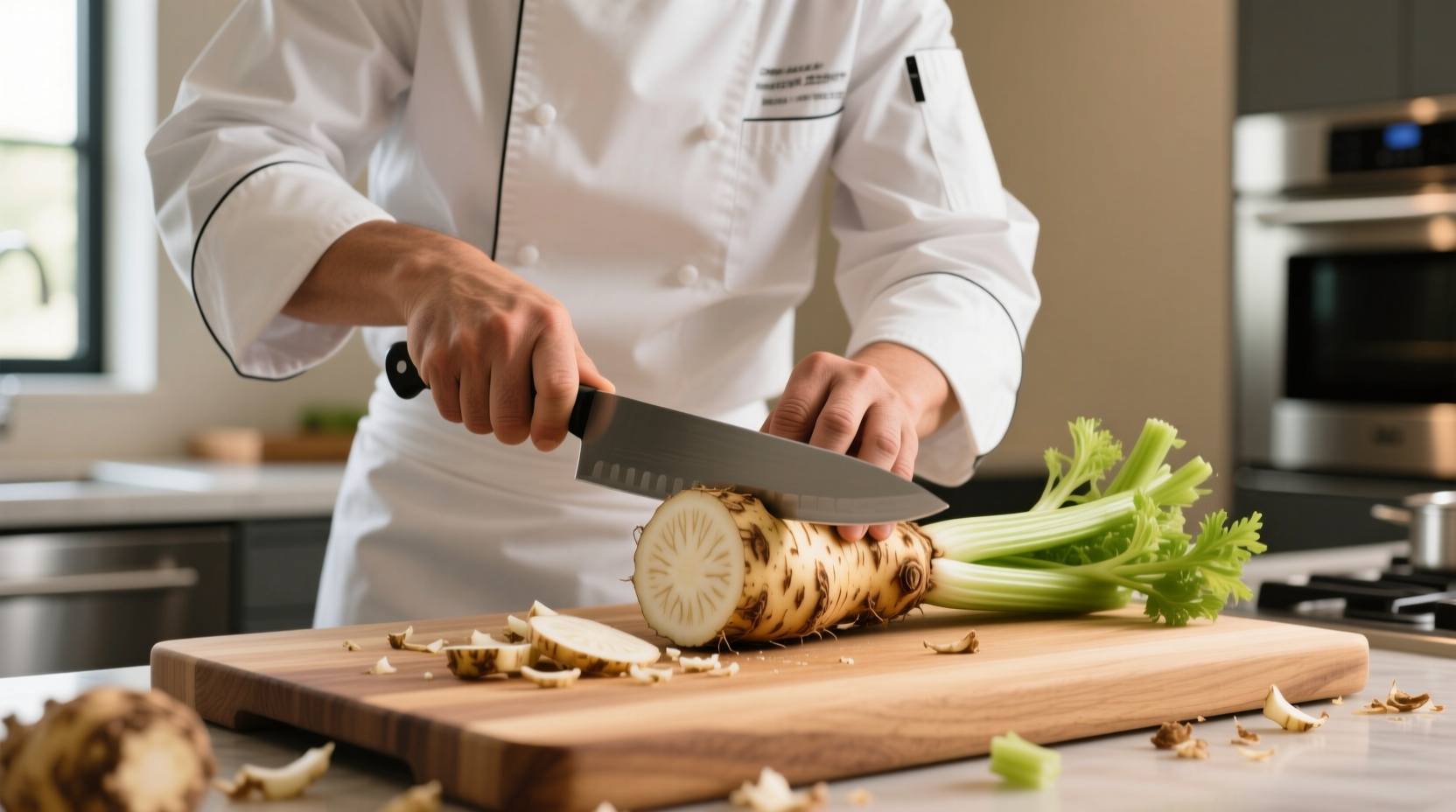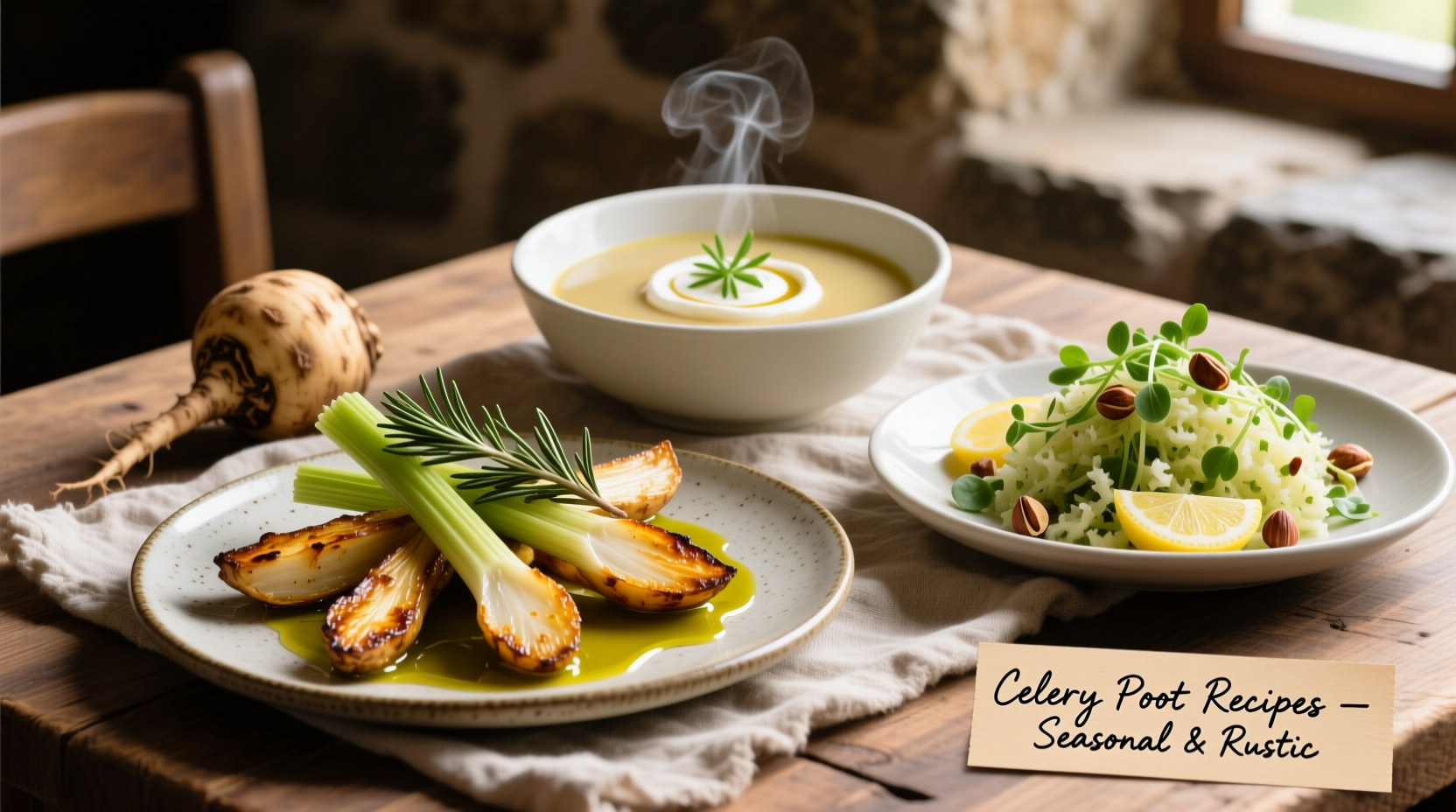Celery root, also known as celeriac, offers a unique earthy flavor with subtle celery notes that elevates soups, purees, and roasted vegetable dishes. This versatile root vegetable has been a European kitchen staple since the 1600s, yet many home cooks remain unfamiliar with its culinary potential. Our guide provides practical techniques backed by culinary science to help you master celery root preparation and cooking.
Understanding Celery Root: More Than Just a Side Dish
Unlike regular celery stalks, celery root (Apium graveolens var. rapaceum) develops a large, knobby bulb instead of prominent stalks. This nutrient-dense vegetable contains 20% of your daily vitamin K needs and 10% of vitamin C in just one cup (135g) of raw product, according to USDA FoodData Central. Its complex flavor profile—combining earthy, nutty, and subtle celery notes—makes it exceptionally versatile in the kitchen.
| Nutrient Comparison (per 100g raw) | Celery Root | Potato | Turnip |
|---|---|---|---|
| Calories | 42 kcal | 77 kcal | 28 kcal |
| Carbohydrates | 9.6g | 17.5g | 6.4g |
| Fiber | 1.8g | 2.2g | 1.8g |
| Vitamin C | 8mg | 19.7mg | 21mg |
| Potassium | 360mg | 421mg | 191mg |
Source: USDA FoodData Central
Selecting and Preparing Celery Root Like a Pro
When choosing celery root at the market, look for firm bulbs between 4-6 inches in diameter with smooth, unblemished skin. Larger specimens often develop a tough core and become fibrous. The vegetable's season runs from October through April, when it reaches peak sweetness after exposure to cool temperatures—a process called vernalization that converts starches to sugars.
Preparation requires special attention due to its irregular shape:
- Peel thoroughly with a sharp knife (not a vegetable peeler) to remove all brown spots
- Immediately submerge cut pieces in acidulated water (1 tablespoon lemon juice per quart of water) to prevent browning
- Remove the tough central core from larger bulbs before cooking
- Store unpeeled bulbs in a perforated plastic bag in the refrigerator's crisper drawer for up to 3 weeks

Culinary Applications: When to Use Which Technique
Celery root's texture and flavor respond differently to various cooking methods. Understanding these context boundaries ensures optimal results:
- Boiling/Steaming: Best for purees and soups where smooth texture is essential. Cook until fork-tender (15-20 minutes) then drain thoroughly to prevent watery results
- Roasting: Ideal for developing complex caramelized flavors. Cut into 1-inch cubes, toss with olive oil and herbs, and roast at 400°F (200°C) for 30-35 minutes
- Raw Preparation: Works well in salads and slaws when julienned or grated. The crisp texture holds up better than potatoes in cold preparations
- Frying: Creates exceptional texture for croquettes or latkes but requires thorough moisture removal after boiling
Four Essential Celery Root Recipes
Classic French Celery Root Soup
This velouté-style soup showcases celery root's delicate flavor. Serves 4.
Ingredients:
- 1 large celery root (about 2 lbs), peeled and cubed
- 1 medium onion, diced
- 2 cloves garlic, minced
- 4 cups vegetable broth
- 1/2 cup heavy cream (optional)
- 2 tbsp butter
- Salt, white pepper, and nutmeg to taste
Method:
- Sauté onions and garlic in butter until translucent
- Add celery root and broth, bring to simmer
- Cover and cook 25 minutes until vegetables are tender
- Blend until smooth using an immersion blender
- Stir in cream (if using) and season with salt, pepper, and a pinch of nutmeg
- Serve with chives and crusty bread
Honey-Roasted Celery Root Wedges
A perfect side dish that caramelizes beautifully. Serves 4.
Ingredients:
- 1 medium celery root, peeled and cut into wedges
- 2 tbsp olive oil
- 1 tbsp honey
- 1 tsp fresh thyme leaves
- 1/2 tsp smoked paprika
- Salt and black pepper to taste
Method:
- Preheat oven to 400°F (200°C)
- Toss celery root wedges with oil, honey, thyme, paprika, salt, and pepper
- Arrange in single layer on baking sheet
- Roast 35-40 minutes, flipping once, until golden brown and tender
- Serve immediately
Celery Root and Apple Salad with Mustard Vinaigrette
A refreshing raw preparation highlighting celery root's crisp texture. Serves 4.
Ingredients:
- 1 small celery root, peeled and julienned
- 1 crisp apple, julienned
- 1/4 cup chopped parsley
- 2 tbsp lemon juice
- 3 tbsp olive oil
- 1 tbsp Dijon mustard
- Salt and pepper to taste
Method:
- Whisk together lemon juice, olive oil, mustard, salt, and pepper
- Toss with celery root, apple, and parsley
- Chill for 30 minutes before serving to allow flavors to meld
Celery Root Mash with Brown Butter
A lower-carb alternative to traditional mashed potatoes. Serves 4.
Ingredients:
- 2 lbs celery root, peeled and cubed
- 3 tbsp unsalted butter
- 1/4 cup warm milk or cream
- Salt and white pepper to taste
- Pinch of ground nutmeg
Method:
- Boil celery root until very tender (20-25 minutes)
- Drain thoroughly and return to pot over low heat to evaporate excess moisture
- Mash with butter, warm milk, salt, pepper, and nutmeg
- For enhanced flavor, brown the butter before adding
- Serve immediately
Storage and Preservation Techniques
Proper storage maintains celery root's quality and extends its shelf life:
- Store unpeeled bulbs in a perforated plastic bag in the refrigerator's crisper drawer
- Do not wash before storage—moisture accelerates spoilage
- Peel and submerge in acidulated water for short-term storage (up to 3 days)
- For long-term storage, blanch cubes for 3 minutes and freeze for up to 10 months
- Preserve flavor by avoiding contact with reactive metals like aluminum during cooking











 浙公网安备
33010002000092号
浙公网安备
33010002000092号 浙B2-20120091-4
浙B2-20120091-4